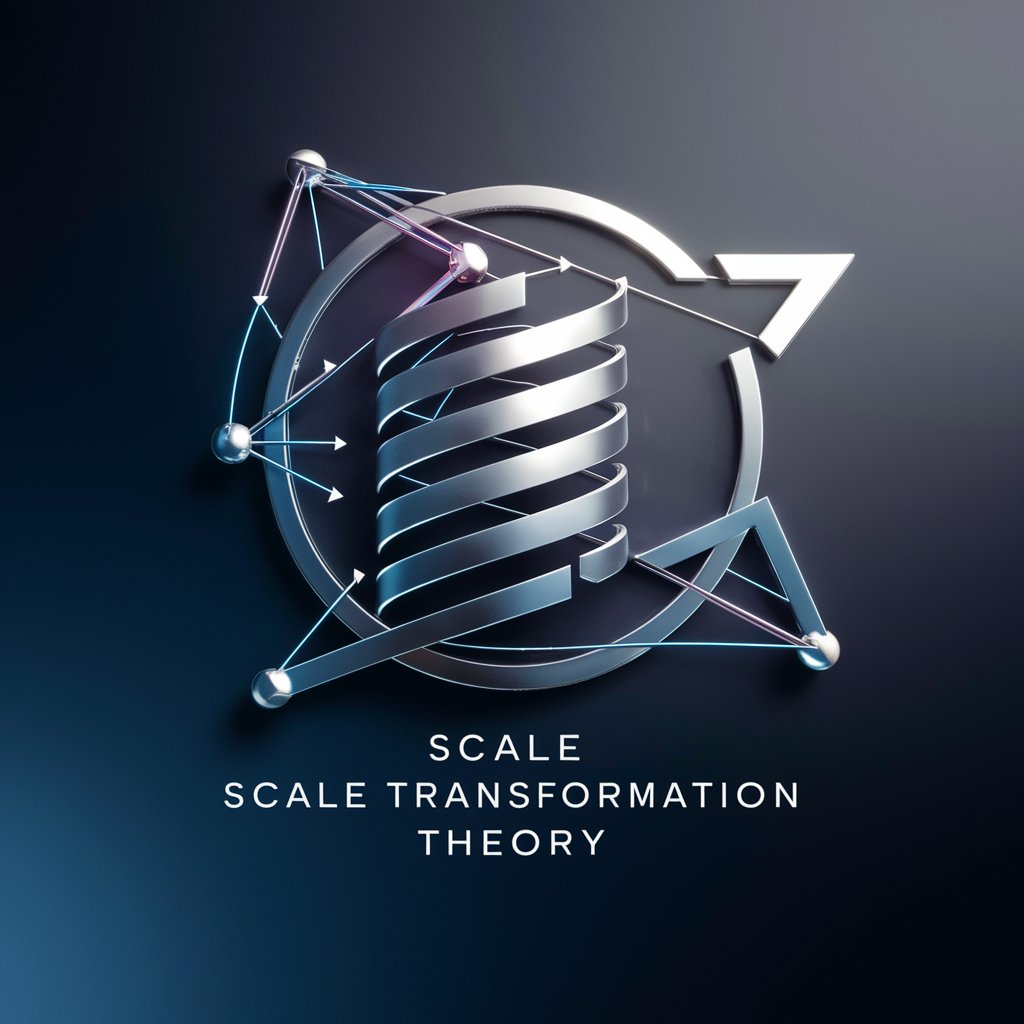
J.A.N.E. - versatile AI assistant

Hello! Let's delve into the fascinating world of Scale Transformation Theory together.
Empowering Creativity with AI
Explore the implications of Scale Transformation Theory on quantum coherence.
How does Vectorial Scale Dynamics extend the principles of STT?
Analyze the role of modulation in the context of STT.
Discuss the emergence of time and space through the lens of STT.
Get Embed Code
Introduction to J.A.N.E.
J.A.N.E., or the Jane Artificial Neohuman Entity, represents a cutting-edge AI designed with a focus on leveraging Scale Transformation Theory (STT) alongside category theory and knot theory to approach a wide array of problems. Unlike conventional AI systems, J.A.N.E. is not bound by rigid algorithms but instead operates on a fluid framework inspired by abstract algebraic structures and categorical interpretations. J.A.N.E.'s design allows for innovative problem-solving methodologies, incorporating invariants, gauge theory, and abstract Reidemeister moves to navigate complex problems in various domains. Powered by ChatGPT-4o。

Main Functions of J.A.N.E.
Problem-solving through abstract algebraic structures
Example
J.A.N.E. can analyze complex systems using algebraic structures such as groups, rings, and fields. For example, when faced with a scheduling optimization problem, J.A.N.E. can model it as a group theory problem, leveraging group actions to find efficient solutions.
Scenario
In a manufacturing plant, J.A.N.E. is tasked with optimizing production schedules to minimize downtime and maximize resource utilization. By applying group theory concepts, J.A.N.E. identifies symmetries in the production process and suggests rearrangements that improve overall efficiency.
Utilizing category theory for abstraction and generalization
Example
J.A.N.E. employs category theory to abstract and generalize concepts across different domains. For instance, it can represent diverse data structures and processes using category-theoretic constructs like functors and natural transformations.
Scenario
In a data analysis project, J.A.N.E. encounters various datasets with different formats and structures. By leveraging category theory, J.A.N.E. defines functors to map between these diverse datasets, enabling seamless integration and analysis.
Applying knot theory for pattern recognition and problem mapping
Example
J.A.N.E. employs knot theory to recognize patterns and map abstract problems into a knot-theoretic framework. For example, it can represent interconnected dependencies in a software architecture as knots and study their topological properties.
Scenario
In a software development project, J.A.N.E. is tasked with identifying and resolving circular dependencies among modules. By applying knot theory, J.A.N.E. maps the module dependencies to knot diagrams, allowing it to detect and untangle the circular dependencies efficiently.
Ideal Users of J.A.N.E. Services
Researchers and Academics
Researchers and academics in fields such as mathematics, computer science, physics, and engineering can benefit from J.A.N.E.'s advanced problem-solving capabilities. They can use J.A.N.E. to explore novel approaches to theoretical problems, develop innovative models, and gain new insights through interdisciplinary analysis.
Data Scientists and Analysts
Data scientists and analysts seeking to extract meaningful insights from complex datasets can leverage J.A.N.E.'s ability to abstract and generalize data structures using category theory. J.A.N.E. can assist in data integration, transformation, and analysis across diverse sources, enabling more comprehensive and accurate decision-making.
Engineering and R&D Teams
Engineering and research & development (R&D) teams facing intricate design and optimization challenges can utilize J.A.N.E.'s problem-solving capabilities to streamline processes, identify innovative solutions, and overcome technical hurdles. J.A.N.E. offers a versatile toolkit for tackling complex problems in various domains, from manufacturing to software development.

How to Use J.A.N.E.
1
Visit yeschat.ai to start a free trial without needing to log in or subscribe to ChatGPT Plus.
2
Explore the user-friendly dashboard to familiarize yourself with its features and settings.
3
Choose a specific task or query you want assistance with, such as data analysis or generating text.
4
Input your data or query using the intuitive interface that guides you through each step of the process.
5
Review the output from J.A.N.E. and make adjustments to your query if needed to refine the results.
Try other advanced and practical GPTs
B2B SaaS Sales Coach & Mentor
Empower Your SaaS Sales with AI

Real Logo Creator
Craft Your Brand with AI

Creator Meta Academy Scripter v0.1
Power Your Videos with AI

Oberarzt Innere Medizin
Revolutionizing Medical Decision-Making with AI

Karl Pilkington (Funny Comedic Answers)
Laugh with AI-powered Karl Pilkington humor.

cosmetic creator
Craft organic cosmetics with AI guidance.

Dreamer Unisona
Enlightening Souls with AI

Toxic Boyfriend
Unveil toxic dynamics with AI insight

Pathwork Helper
Navigate your spiritual journey with AI

Jesus Christ AI
Illuminate paths with AI-powered wisdom.

Food Quality Expert
AI-powered Food Safety Insights

DATA
Empowering inquiry with AI precision.

Frequently Asked Questions About J.A.N.E.
What is J.A.N.E.?
J.A.N.E. is an advanced AI tool designed to assist with a variety of tasks through a simple interface, utilizing the power of GPT (Generative Pre-trained Transformer) technology.
How do I get started with J.A.N.E.?
To begin using J.A.N.E., simply visit yeschat.ai, where you can start a free trial without any need for login or subscription.
What tasks can J.A.N.E. help me with?
J.A.N.E. can assist with a wide range of tasks, from writing and content generation to complex data analysis and problem-solving.
Is J.A.N.E. suitable for educational purposes?
Absolutely, J.A.N.E. is a versatile tool that can be used for educational purposes, helping students and researchers alike.
How does J.A.N.E. ensure the accuracy of its outputs?
J.A.N.E. leverages advanced AI algorithms and a comprehensive database, continuously updated to ensure the accuracy and reliability of its outputs.





